Lesson Overview
In this lesson you'll learn what Node.js is and what it's typically used for. I'll give a brief and simplified summary of how it works and why it's to your advantage to learn Node.js.
In this lesson you'll learn what Node.js is and what it's typically used for. I'll give a brief and simplified summary of how it works and why it's to your advantage to learn Node.js.
Node.js is a runtime environment that allows you to create server-side programs using JavaScript. It allows you to do full-stack development: full-stack development means writing both the back-end and the front-end of an application using a single language/technology. The back-end refers to the server-side code and the front-end refers to the client-side code. Before Node.js, you would write the front-end using JavaScript, which used to be a client-side technology and didn't run on the server. Then you had to write the back-end using a server-side technology such as PHP. With Node.js, you can write both the front-end and back-end using a single language: JavaScript.
Node.js is not a framework, although many frameworks use Node.js as a foundation.
Node.js is open source, and cross-platform (it can run on any machine without having to recompile it for different machine languages).
Unlike regular JavaScript, which runs in a browser, Node.js runs on the server. It has no browser-specific APIs, but it does have APIs for very basic HTTP communcations, basic encryption, and many other useful components you would need for web applications.
Lots of frameworks are based on Node.js. One of the most common is Express.js, which I'll also cover in these tutorials. Other popular frameworks based on Node.js include Koa, Vue.js, NestJs, React, Sails, Next.js, Mocha, and lots more. A quick web search for "Node.js frameworks" will bring up a long list of possibilities, and the list is constantly changing as new frameworks are created and some increase or decrease in popularity.
Express.js is the most popular framework for Node.js. Express.js is the foundation of several other popular frameworks such as Sails, Feathers, NestJs, and many more. It helps you perform tasks Node.js can't do alone, such as handling different http verbs (get, post, etc) and using middleware. It also allows you to create HTML templates into which you can place dynamic data, and even do basic things like setting and using environment variables.
Express.js is unopinionated: you can add any middleware you need in whatever order you want, you can modularize your code in multiple files if you want, using any directory structure you prefer, etc.
To use Express.js, we write a Node.js application, import Express.js, and then use the Express.js modules and functions we are interested in.
Typically, you start a Node.JS application by creating a server that responds to http requests. The code in your app (that you write) will create the server, configure it, and handle requests that come in. When your app runs, it will receive requests and send appropriate responses. A lot of this work is done using callback functions.
Usually JavaScript is client-side: The browser contains JavaScript engine that interprets/executes JavaScript. JavaScript Engines include:
Node.js is built with V8, but since it executes server-side, it doesn't matter to the other browsers that use different engines!
A thread is a single execution context: it can only execute one task at a time. Some processes require several threads in order to get their tasks done. Most software uses a thread pool: a collection of threads that are available to be assigned to processes waiting to execute. When a process needs a thread, it takes one from the thread pool when it becomes available. In this way, processes can get things done using multiple threads at the same time.
Unlike most software, Node.js uses a single event loop. This event loop consists of a single thread that, like all threads, can only perform one task at a time. It's very similar to a chef working in her kitchen: She can be working on several dishes for several orders in various stages of completion: she could be cooking food for one order while preparing ingredients for a new order. However, she can only work on one specific task at a time.
The chef has specific dishes to complete and each dish consists of a specific set of tasks that need to be performed in order, but the chef is not obligated to complete a task in full before starting a different task. For example, she can be cutting some onions for an order that just came in, and then stop cutting to turn and flip some steaks for an order that is almost completed, then taste a sauce and add some salt, and then turn back to cutting onions.
The chef can even delegate some tasks to other chefs or cooks in the kitchen. For example, she could have an apprentice cut the onions while she tells another to retrieve something from the fridge, and then she can start plating the steaks that are now finished cooking.
The Node.js event loop is similar: there are a series of tasks to get done, and the event loop is always working on one task at a time. Sometimes it offloads larger tasks to other components of the system or to other modules. It does this with callbacks: the component will inform the event loop when the callback has been finished, and the event loop will pick the task back up and work on it before passing it off to something else so that a different task can be worked on.
Here's a simplified explanation of how this works. Note that I'm skimming over some of the finer details. If you want to know more, you can find many resources online that explain the various phases of the event loop and how those phases work together to process many tasks in multiple request/response cycles.
Imagine a couple of requests arrive at the server for processing. These could be requests for a simple web page, or they could be more complex requests that require access to a database or more intensive processing. A request may consist of multiple tasks: For example, a request might require retrieving some database data and then formatting that data in an HTML table before that request's response can be sent back to the client.
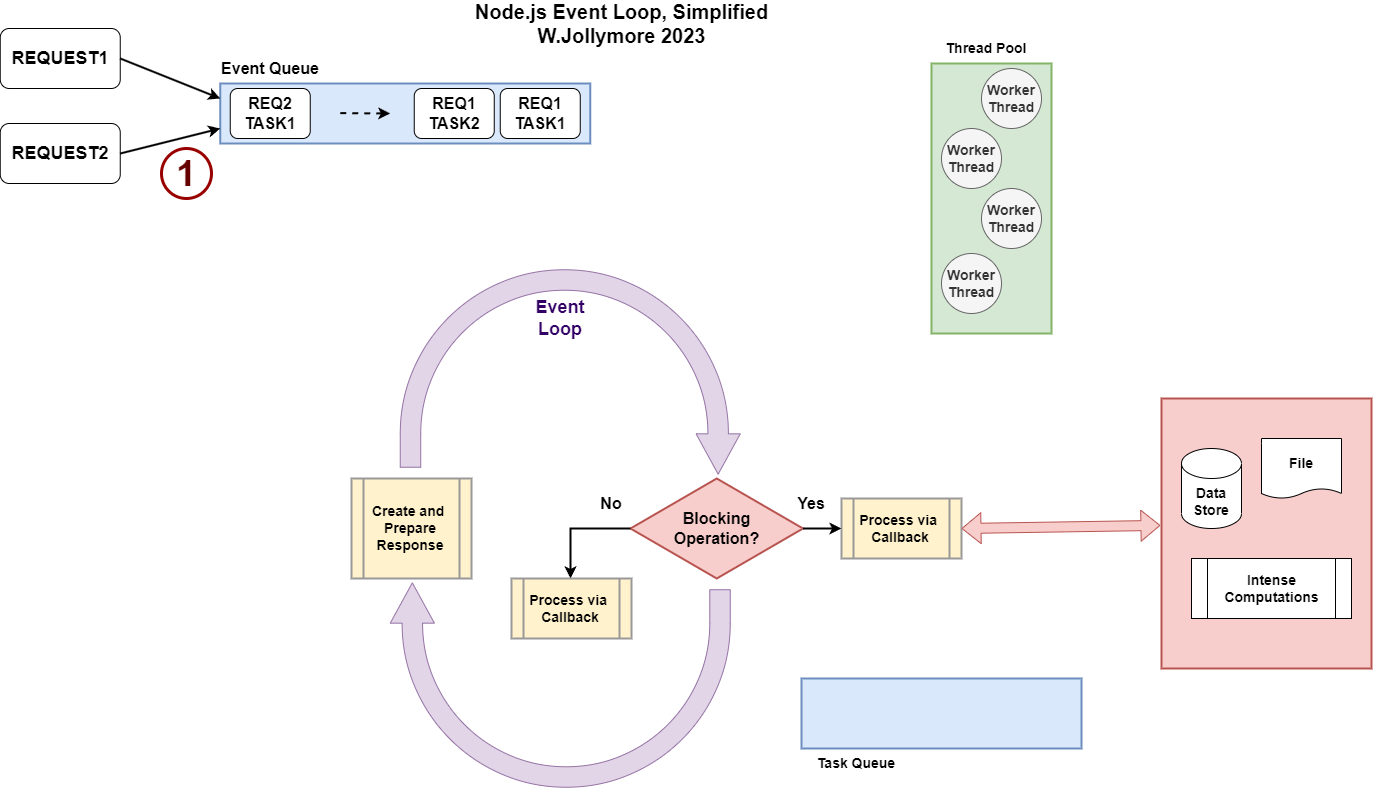
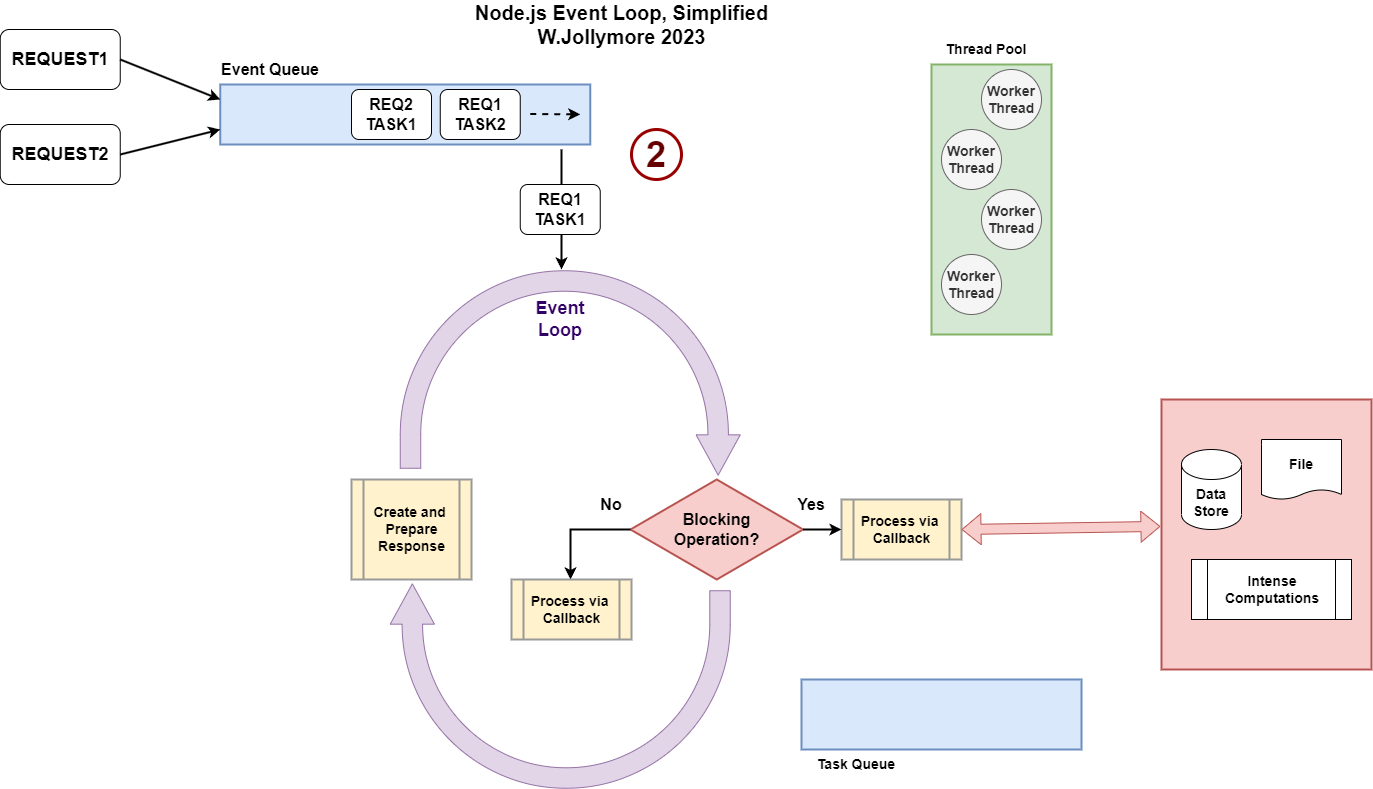
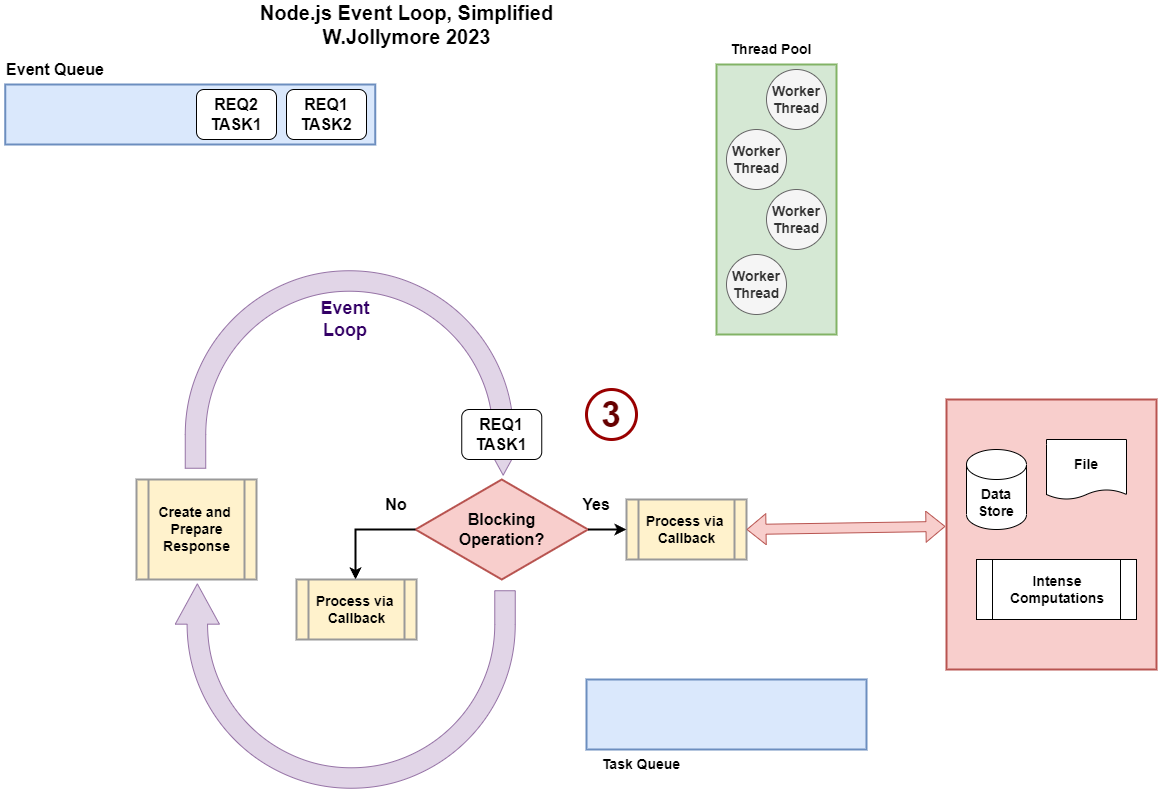
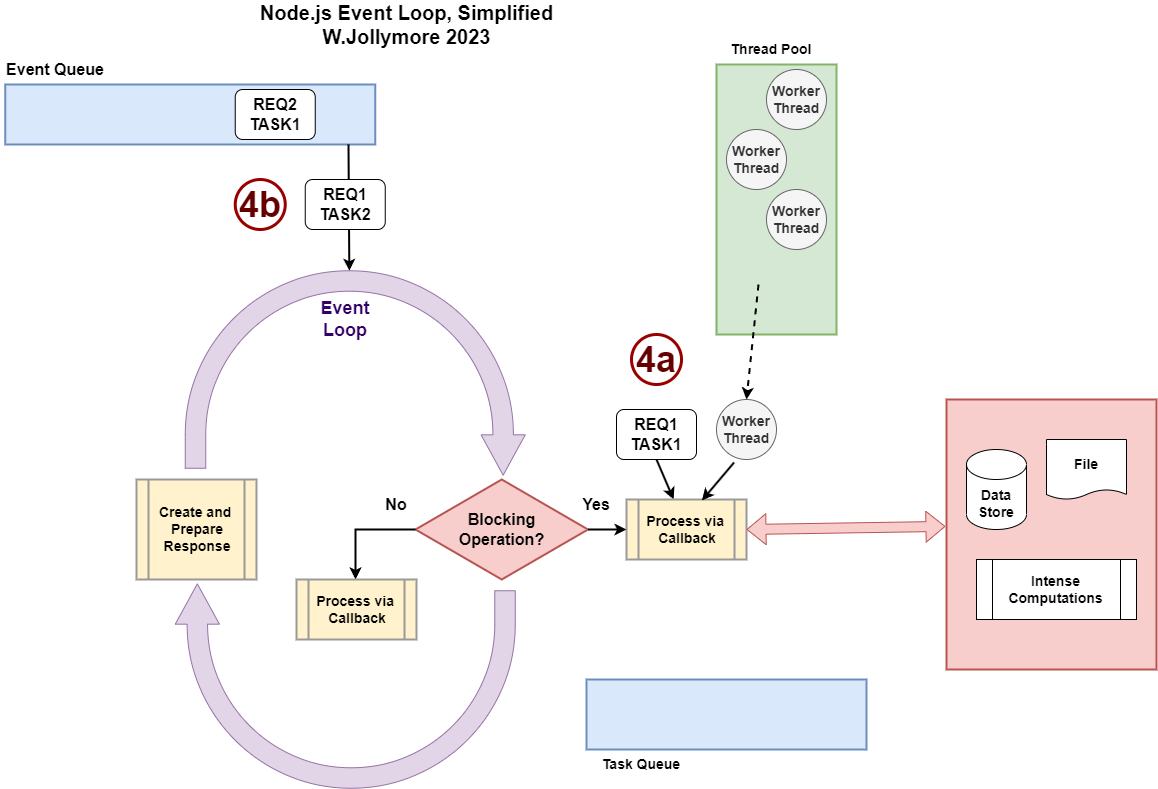
Part of Node.js includes a thread pool: a collection of available worker threads who sit and wait until they are needed. These separate worker threads process blocking tasks via callbacks: the callback executes on the worker thread so that the event loop can move on to the next job.
This means the next task can enter the event loop for processing while the worker thread is busy dealing with the first task. This task has to be evaluated to see if it contains a blocking operation or non-blocking operation.
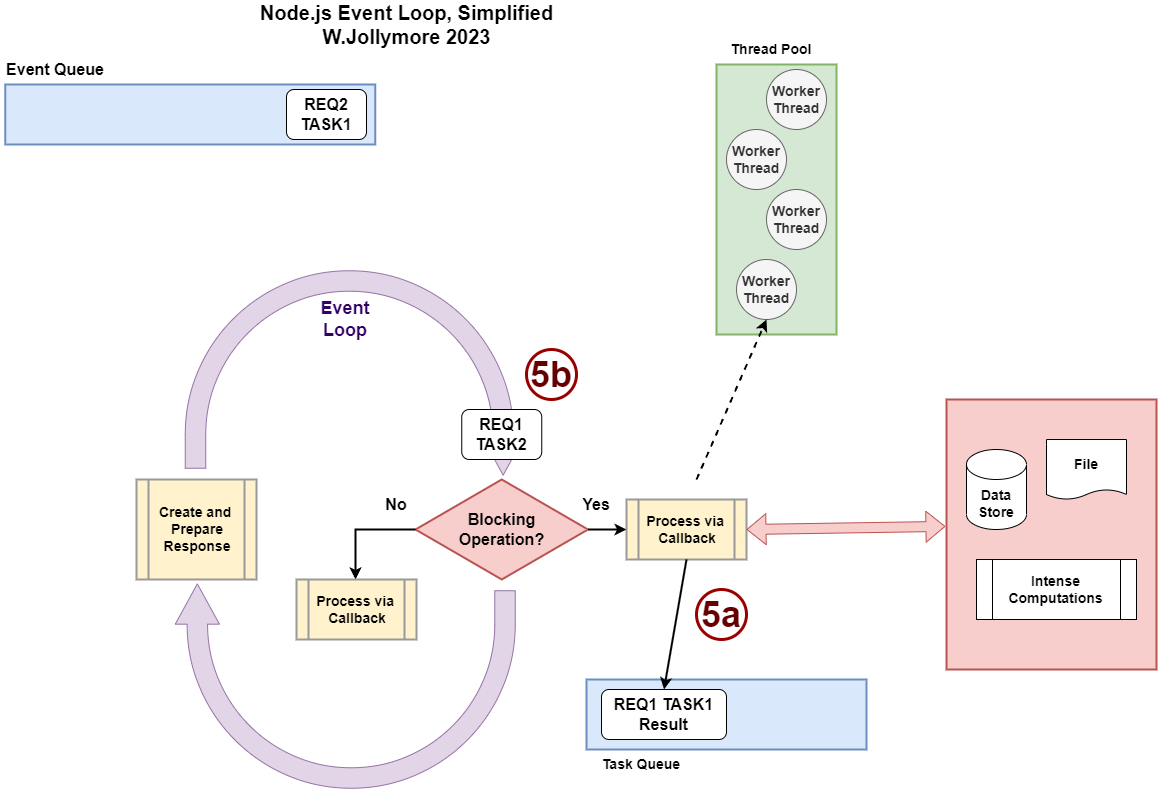
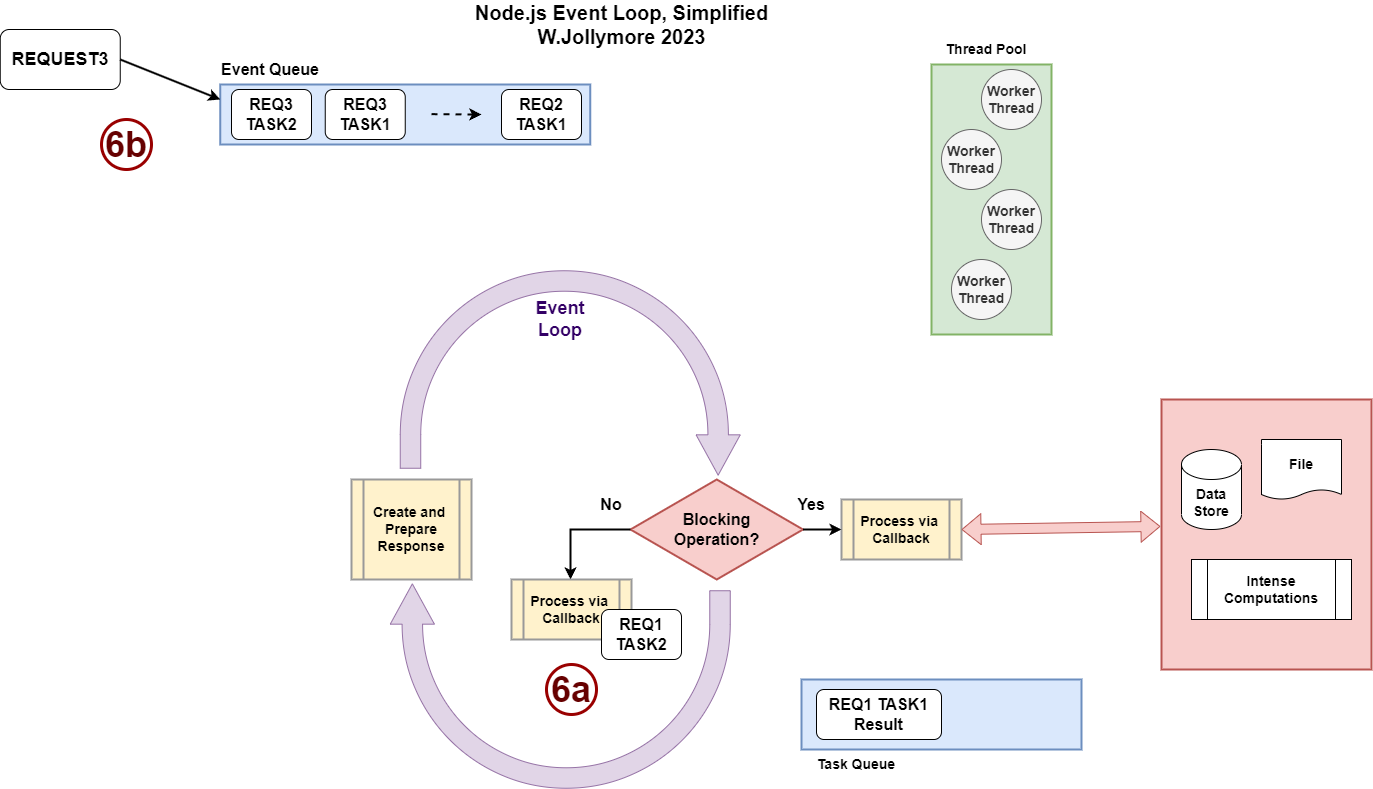
Once the second task's non-blocking operation has completed, the event loop sends the result to the area that prepares and sends responses. At this time, a new request with 2 tasks arrives: these tasks sit in the event queue and wait their turn for processing.
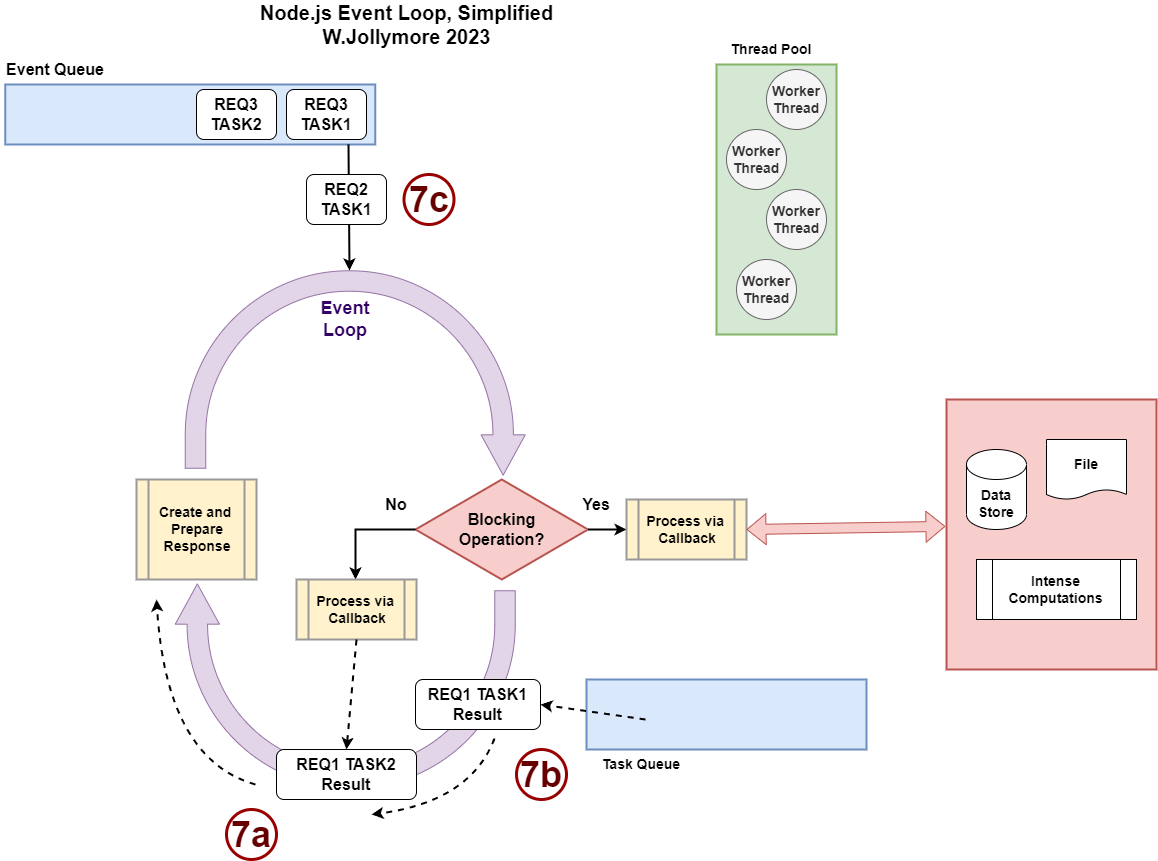
Both the tasks for the first request can now be used to prepare and send off a response to the client. Meanwhile, the task for the second request is being processed as a blocking or non-blocking operation. Eventually, the next task in the event queue can enter the event loop for processing.
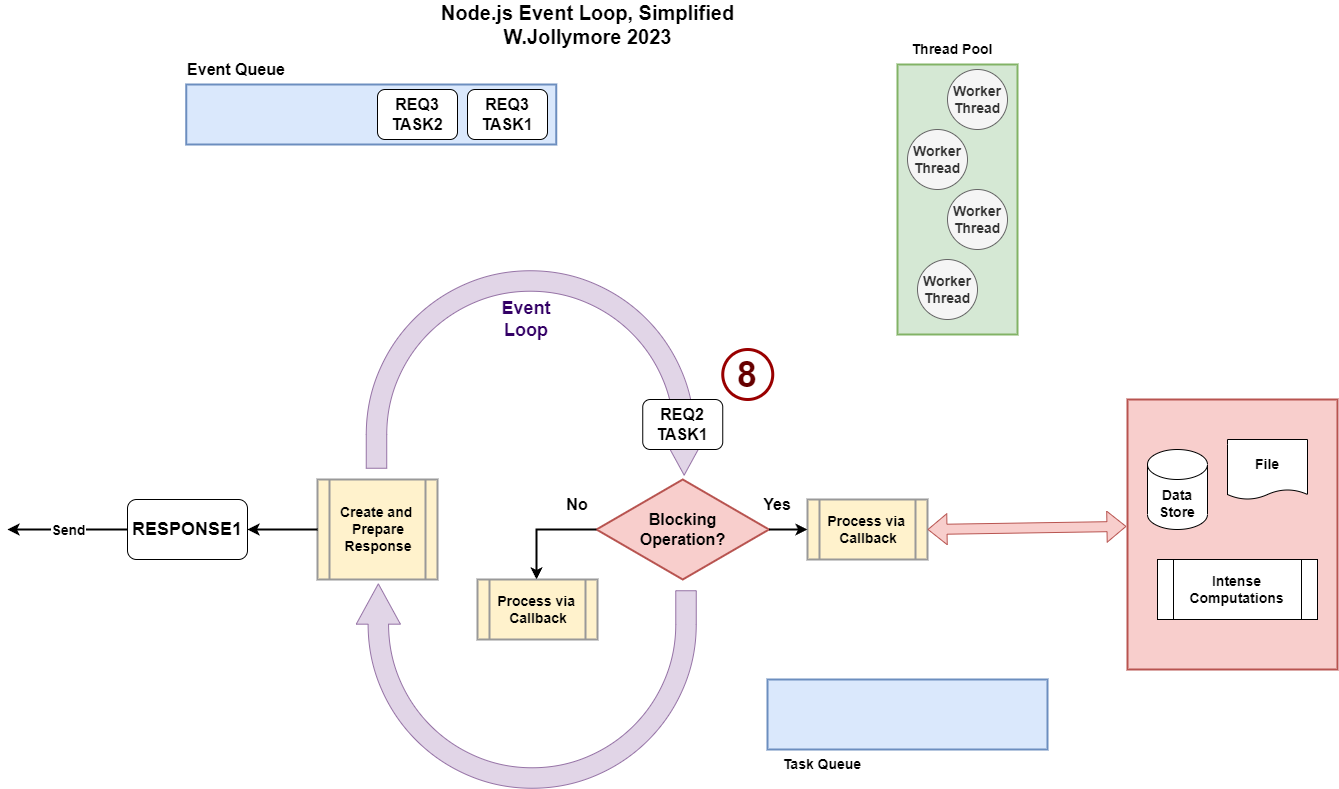
Because of the event loop and the way Node.js works, it's a great choice for handling multiple request/response cycles. Extra modules/frameworks can be added to handle both blocking and non-blocking operations. This is why Node.js is able to quickly handle several requests efficiently with fewer resources.
Node.js uses the V8 engine, which is widely supported on the internet: V8 can only grow and improve and will be around for a very long time. So learning Node.js is a good investment in your future. Jobs that require Node.js and Node.js frameworks are currently in-demand. Some very familiar web applications are currently using Node.js, such as Mozilla, Paypal, Yahoo, LinkedIn, Netflix, eBay, and Uber.
Node.js is much better at certain things than other technologies, so if you plan on writing any of these types of applications, it's definitely a good idea to learn Node.js. For example, it's much better at applications that require chat functionality, instant messaging, and real-time collaboration tools. It's also great for applications that require continuous data streaming, single-page applications that need a lot of functionality in a single page, and location-based applications that need continuous location updates. It's also the preferred technology for IoT (Internet of Things) systems because of its ability to quickly and efficiently process several tasks at the same time.
Node.js itself has many benefits over other languages: